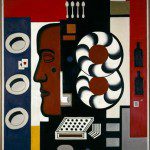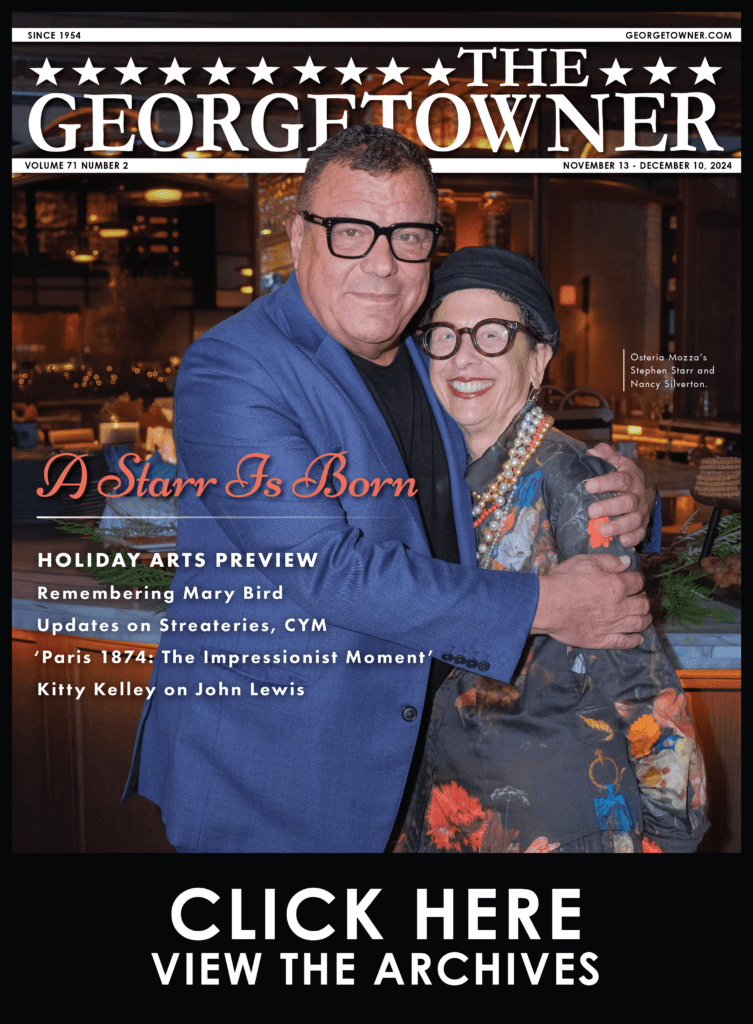In the catalogue for the exhibition “Léger: Modern Art and the Metropolis,” a photograph shows the painter at the opening of the Philadelphia Museum of Art’s Gallatin Collection in 1943. Age 62 at the time, Léger stands in front of his 1919 masterpiece, “The City.” He looks like a working-class Frenchman, a veteran of World War I, who has carefully parted his hair, combed his moustache, and put on his best jacket and tie for the occasion.
Fernand Léger was such a man, but he was also one of the most sophisticated artists of his generation—and it was quite a generation. Born in 1881, he was less than two years younger than Matisse and about nine months older than Picasso.
We are far less familiar with Léger than with these 20th-century superstars. Fewer examples of his work are owned by American museums and retrospectives are rare (the last, at MoMA, was in 1998). But this is also because, trained as an architect and designer, much of Léger’s artistic activity extended beyond easel painting to mural painting, sculpture, set and costume design, and even filmmaking.
Curated by Anna Vallye, the Philadelphia exhibition centers on this range of activity, much of it collaborative, in the Paris of the 1920s. Parts of the show, which runs through January 5, evoke the urban vibrancy of the Machine Age that inspired Léger and his colleagues.
At the entrance, on a large screen, is a captivating—if gray and grainy—two-minute trip up the Eiffel Tower, filmed by Thomas Edison and James White in 1900 at the Paris Exposition Universelle. This is one of half a dozen films playing continuously in the exhibition, several with modernist soundtracks.
One, the landmark “Ballet Mécanique of 1924,” is a 16-minute experimental film co-directed by Léger and American filmmaker Dudley Murphy, accompanied by a score by another American, George Antheil, for percussion, pianos, player pianos, propellers, electric bells, and a siren. The images, in rapid alternation and succession, include smiling lips, a peasant woman climbing stairs carrying a sack, parrots, automobiles seeming to run over the viewer, and kitchenware in motion.
Those who have visited the Ballets Russes exhibition at the National Gallery will find a sidebar in the Philadelphia show, as Léger designed sets and costumes for Ballets Suédois (Swedish). An abstract backdrop designed by Léger for that troupe’s 1922 production of “Skating Rink”—inspired by Charlie Chaplin’s film “The Rink”—dominates the rear wall.
But the centerpiece of the exhibition, though it comes early on, is “The City,” on view along with three good-size oil studies. Nearly ten feet wide and seven and a half feet high, “The City” demonstrates a mastery of color and composition that is hard to grasp. You could imagine it being cut up to make eight great, mostly abstract paintings, or more, except that it is seamless, a thrilling and beautiful whole.
Other paintings on view have this quality of being somehow both challenging and beautiful, including, “Disks of 1918,” “Mechanical Elements of 1924,” “Composition of 1923-27” and the extraordinary post-Cubist café scene “Composition with Hand and Hats of 1927.” There are also works by artists such as Robert Delaunay, Sonia Delaunay-Terk, Lissitzky, Man Ray, Metzinger, Mondrian, and Murphy (his wonderful, very “American Razor”).
The only reference to Léger’s later career is the seven-part “Study for a Cinematic Mural of 1938-39,” a commission for Rockefeller Center that was never carried out. Though the informality of these works is partly due to their being studies on cardboard, they also have a Rousseau-like vitality, incorporating an almost cartoon-like Statue of Liberty. They remind us of another artist from Normandy, Raoul Dufy, and of Léger’s importance as a precursor of the Pop artists of the 1950s and 1960s




